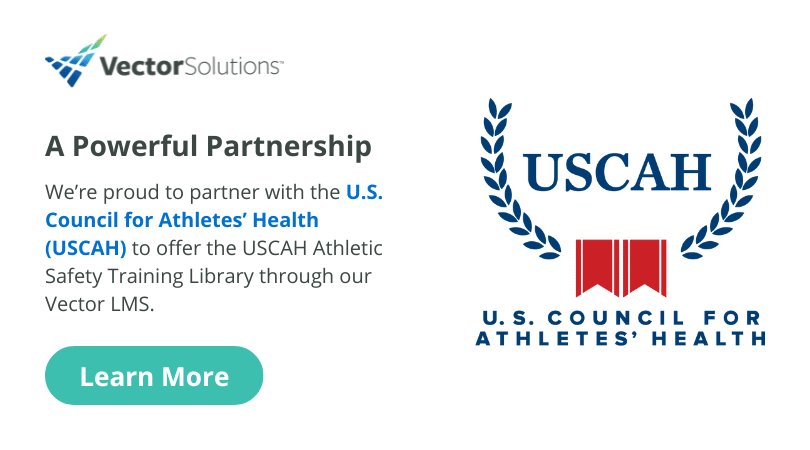December 12, 2023 13 min read

A Forecast of 2024 Learning and Training Trends
Industry:
Solution:

We’re heading into 2024 and, for many of us, the changes, challenges, and opportunities that impacted our businesses over the past few years may have finally started to find an equilibrium. We are pros at handling a hybrid or a remote workforce and digital working life – and part of that means reviewing how we’re helping our teams grow. In 2024, our predictions on what skills and training types will matter most will help you and your employees be better prepared – no matter what lies ahead in the coming year.
Here’s what we see coming for the learning and training industry in 2024:
7 Items to Prioritize in Learning and Training in 2024
1. Training for Employee Retention
Business leaders must prioritize learning and development opportunities for their employees. Providing these opportunities can help to make your team members feel valued, communicate your organization’s culture and values, and attract and retain top talent.
Millennials and Gen Z want professional development – research shows it is more important to them than other traditional benefits employers offer such as cash bonuses or flexible working opportunities. 27% of millennials considered leaving or left their job in 2021, citing lack of growth and training and development opportunities as the prevailing reasons why. 90% of job searchers felt strong training and upskilling are important, a number that rose to 97% in tech-specific roles. We know that learning and training are critical to retaining happy employees, which is important to the health of our organizations, so we expect to see organizations working to provide adequate opportunities and offerings in 2024.
2. AI/Machine Learning
There is no escaping the power and incredible impact of artificial intelligence (AI) and machine learning on learning and development. This past year saw incredible growth in the area of AI-powered tools and the sheer variety that people can choose from. In January 2023, ChatGPT, the company that owns OpenAI, an American research laboratory for artificial intelligence (AI), boasted an estimated 100 million active monthly users – a feat that took Instagram two and a half years and TikTok nine months to achieve, respectively. That’s why embracing and purposefully integrating AI and machine learning into your workflows is a smart way to kick off the new year.
While your organization may want to place guardrails around how your team uses AI so that they do not accidentally commit intellectual property violations or inadvertently use AI in an unethical way, AI-powered tools are perfect to help ignite your team’s creative spark. When done effectively and with care, AI has the ability to help you save time when it comes to common workflow tasks, to quickstart brainstorming and notetaking sessions, and to summarize large amounts of data and information.
3. Mental Health Support
Mental health can be a tricky topic to broach, especially when it comes to the workplace. But savvy business leaders know they cannot simply ignore mental health issues and the impact they can have on employees and the work they do. In fact, depression is the single biggest cause of disability in the world and mental health issues cost the global economy $1 trillion in lost productivity a year. What’s even more alarming is that, from 2013 to 2017, more than 12% of suicides were found to be related to a work problem or crisis in some way. This is why prioritizing the mental health of your employees in 2024 is not only important to your business, it is necessary to protect your valued workforce.
This may look very different depending on your organization. For instance, you may approach mental health topics by offering training opportunities for your team, ensuring they are appropriately prepared for the jobs they have to perform every day, or else offering them courses on vital topics like stress management and suicide prevention. Perhaps you may choose to invest in some kind of performance management software to help you identify anyone who is struggling so you can intervene and offer them support. Or maybe you will offer your team self-care opportunities and access to wellness apps and mental health days. Whether you choose to protect your team with some combination of the options listed above or others that are critical for your industry, making a plan for the coming year is crucial.
4. Multilingual Learning
In our global economy, most of us work with an increasingly diverse workforce. This is both good and exciting – and the best way to navigate the potential challenges that can come along with this is to face them head-on. That is why ensuring that you are prepared to meet the needs of all of your employees, including multilingual learners, is an important part of preparing your 2024 plan.
When it comes to multilingual learning, there are many benchmarks that you are required to meet. Although English is the dominant language in our country and often in business, providing training in the language your employees best understand is a regulatory requirement of OSHA. But even more than focusing on compliance, ensuring that your multilingual learners are trained properly will help you prevent accidents or possibly even deaths from occurring. For example, according to OSHA, about 25% of job-related accidents are at least partially related to language barriers. When you work to meet the needs of your multilingual learners, you are not only keeping your people safer, you are giving them the tools they need to thrive in their jobs.
5. Upskilling
With so many technological advances, the digital economy is transforming fast, meaning that everything needs to be done more efficiently and effectively – and all to the benefit of the customer. With all of these changes, it’s no wonder that some jobs are transforming into something unrecognizable, while other jobs are disappearing completely. Upskilling is what will keep the workforce ready to take on these new and transformed roles.
Upskilling entails learning new skills, but it also involves a cultural shift. If you want to help your team remain competitive in our rapidly shifting world, then you have to be ready to adapt. This also includes having a mindset that is much broader, willing to embrace cultural diversity and new ways of thinking. No matter what industry your company is a part of, your employees need to have technical skills and abilities that they have never needed to have before – and it’s in your best interest to get them there. According to Gallup, the expense of replacing a salaried employee can be up to two times the employee’s annual salary.
6. 3D and Video Learning
Research shows humans may learn best when processing a combination of visual and auditory information, so it follows that video learning works. Data from over 105 studies show video learning may even be more effective than learning via in-person lectures. Video learning forces instructors and content creators to edit for concise, impactful content and even allows learners to skip over unnecessary or boring content.
3D training will also be a particularly important part of modernizing your training for 2024 and beyond. By boasting a more hands-on experience, and empowering learners to take control of their own learning, 3D training allows workers to practice the skills they most need in a much easier and safer environment. That’s why, for more than a decade, Vector Solutions has designed advanced 3D-animated courseware with over 1,000 safety and operations training modules that have helped train over 250,000 workers worldwide.
7. Diversity & Accessibility
The proliferation of online learning has many benefits, including ease of access for lots of different types of people, including those with disabilities and various special needs. But, if you’re not careful in your course creation process, bias and discrimination can still harm minority and female learners – and, particularly with online courses, bias and discrimination can be harder to spot.
Additionally, according to the analysis of unemployment data from January 2020 to September of this year, the Kessler Foundation and the University of New Hampshire’s Institute on Disability found that, proportionally, more people with disabilities are finding jobs than people without disabilities.
In 2024, inclusivity and accessibility should be cornerstones of your content creation process. Ensuring diverse, equitable, inclusive, and accessible content will help you provide learners with the relevant, updated, and results-driven content they need – when, where, and how they need it.
Making your courses accessible to all should include a consideration of the audience and whether that audience is well-represented in the story of the course. This may mean asking critical questions to evaluate the course content to reach, represent, and include everyone in your content. By auditing your courses, you can address inclusivity and accessibility concerns and use those learnings to optimize your process in the future.
How to Prepare for the Year Ahead
Our world and the landscape of learning and training continue to change – and it is our responsibility to evolve with them. At Vector, this is a powerful idea that aligns with how we perform our mission-driven work to meet the specific, dynamic needs of our clients: leveraging best-in-class, cutting-edge tech solutions to increase safety and mitigate risk in the real world.
Learn more about our powerful and customizable solutions for critical industries.








